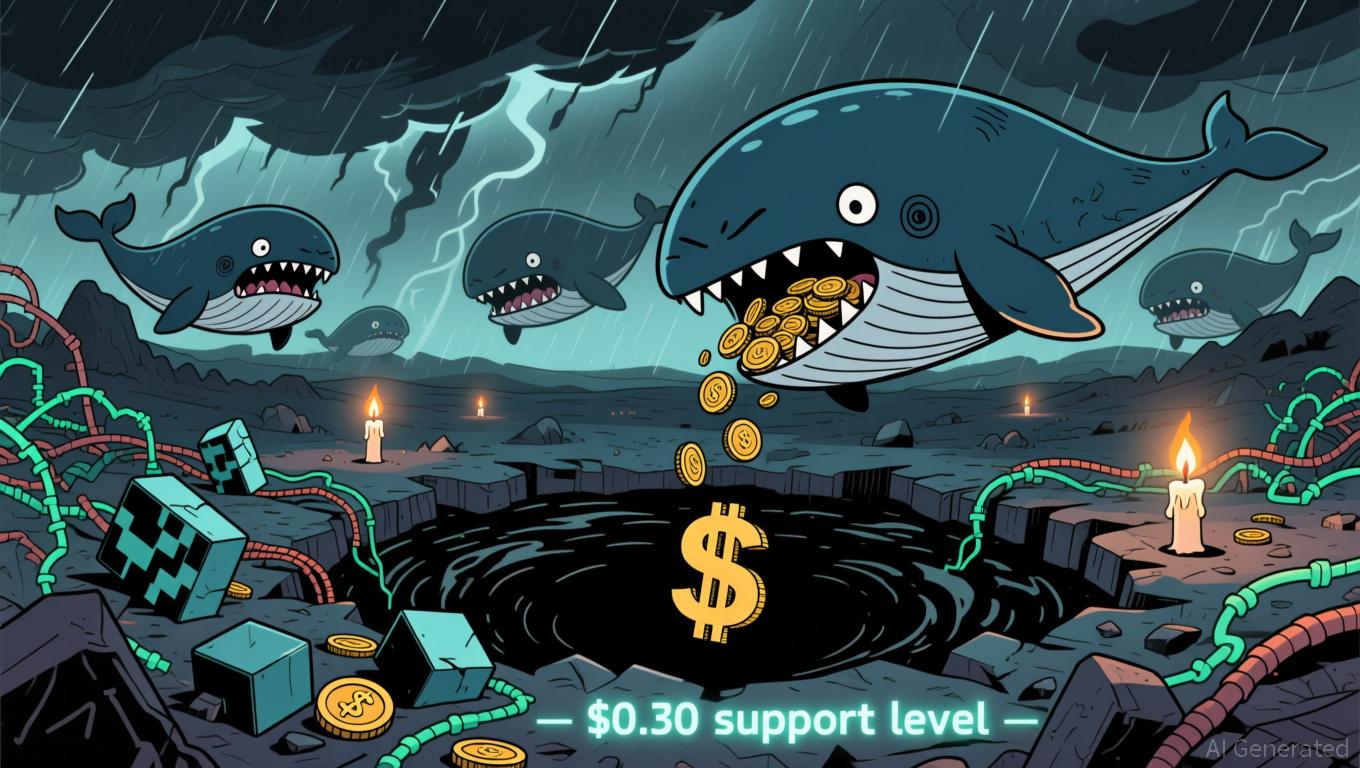Trump’s Tariff Gamble Faces Supreme Court Judgment
- Trump's administration prepares alternative tariff strategies under Sections 301/122 if Supreme Court invalidates IEEPA-based duties, risking legal and enforcement challenges. - IEEPA-derived tariffs (55% of 14.4% average rate) face judicial scrutiny, with lower courts already deeming country-based levies unlawful over "economic emergency" claims. - Potential $88B duty refunds and renegotiations with China/Brazil loom, while crypto markets price in 24% odds of SCOTUS upholding Trump's emergency powers. -
The Trump administration is discreetly developing backup strategies in case the Supreme Court strips away its broad tariff authority, indicating a tactical shift to preserve its trade stance amid legal ambiguity. The White House, which has enacted historic tariffs using the International Emergency Economic Powers Act (IEEPA), is
Courts have already challenged the administration’s use of IEEPA.

The implications go beyond legal debates. A decision against the tariffs could result in over $88 billion in refunds and force new negotiations with countries such as China and Brazil.
The administration’s backup plans also encounter internal obstacles. Section 232 tariffs on steel, aluminum, and vehicles—already a source of friction with Europe—could be broadened, risking breaches of trade agreements.
Experts in law and economics warn that these fallback measures lack IEEPA’s adaptability. For example, Section 122 tariffs expire after 150 days and would need continual renewal, potentially prompting new legal challenges.
The Supreme Court’s verdict, expected by early summer, will reveal how well the administration can adjust.
As the deadline approaches, companies and foreign governments are preparing for ongoing unpredictability. The administration’s contingency plan, though ready, highlights the vulnerability of a trade policy reliant on extraordinary emergency powers.
Disclaimer: The content of this article solely reflects the author's opinion and does not represent the platform in any capacity. This article is not intended to serve as a reference for making investment decisions.
You may also like
Cardano News Update: ADA Faces $0.30 Battle as Whale Sell-Offs and Network Issues Combine for Turbulent Conditions
- ADA faces critical pressure as network glitches and whale-driven sell-offs push price near $0.30 support level. - Nov 21 mainnet slowdown and whale's $6M loss via USDA swap triggered 13.7% 24-hour ADA drop to $0.47. - Technical indicators show oversold RSI (34.23) and broken key supports, with $0.30 floor now at risk of capitulation. - Upcoming Midnight NIGHT token launch (Dec 8) offers potential catalyst, but liquidity challenges persist amid bearish momentum.

XRP News Update: XRP ETF Achieves Milestone While Prices Drop Amid Whale Activity
- XRP ETF's 2025 debut saw $250M inflows but XRP price fell below $2 within 48 hours due to whale selling and low liquidity. - Whale accounts offloaded 200M XRP tokens post-launch, exacerbating structural imbalance with 41.5% of supply still in loss positions. - ETF's in-kind creation mechanism masked true inflow scale, contrasting with Bitcoin ETFs' $866M outflows showing market caution. - Analysts predict 2026 turning point for XRP, emphasizing need to resolve whale concentration and liquidity gaps befor

Bitcoin Updates: Institutions Increase Bitcoin ETF Investments During Market Volatility
- U.S. Bitcoin ETFs saw $238M net inflow on Nov 21, reversing weeks of redemptions, despite BlackRock’s IBIT logging a $523M outflow earlier in the month. - Fidelity’s FBTC and Grayscale’s BTC attracted $192.9M inflows, reflecting a shift to lower-cost ETFs amid volatile markets and regulatory uncertainty. - Institutional investors like Harvard boosted IBIT holdings by 257%, signaling long-term confidence in Bitcoin as a strategic reserve asset despite short-term turbulence. - Ethereum ETFs faced $262M out

Bret Taylor’s Sierra surpasses $100 million in annual recurring revenue in less than two years